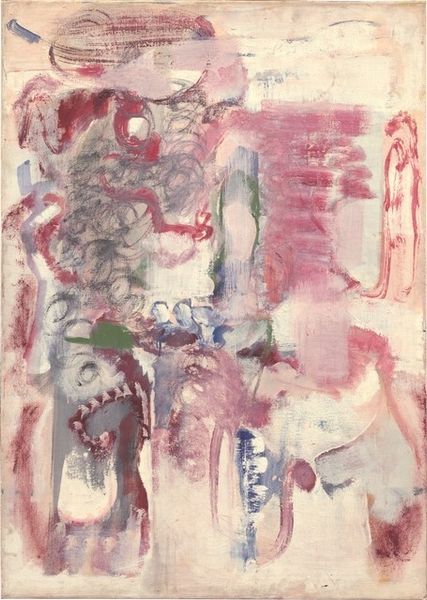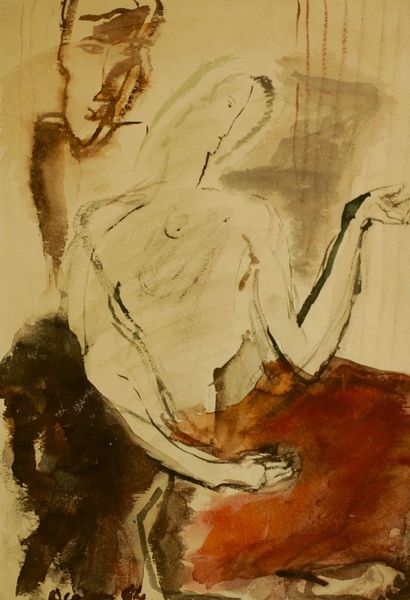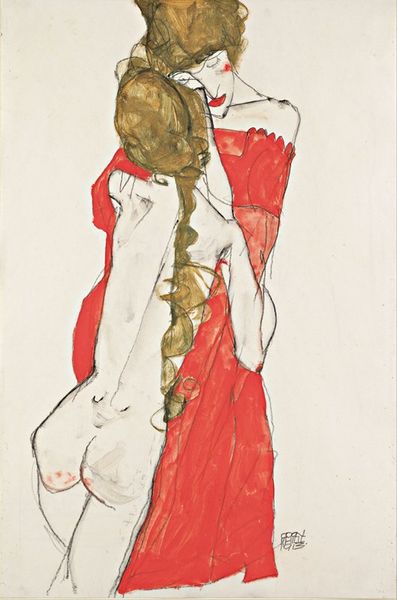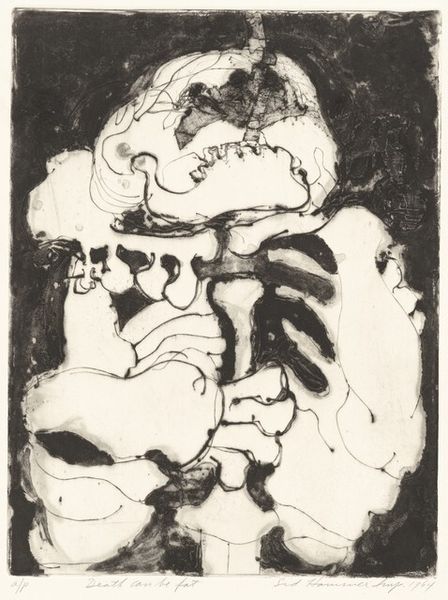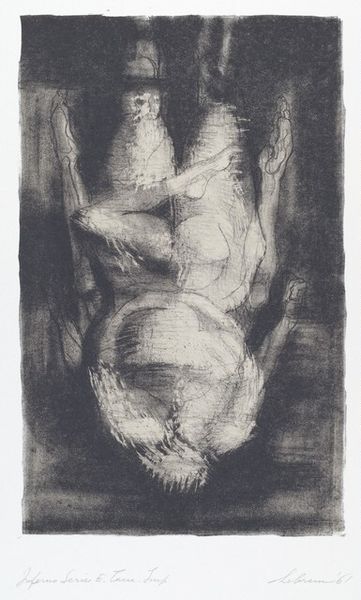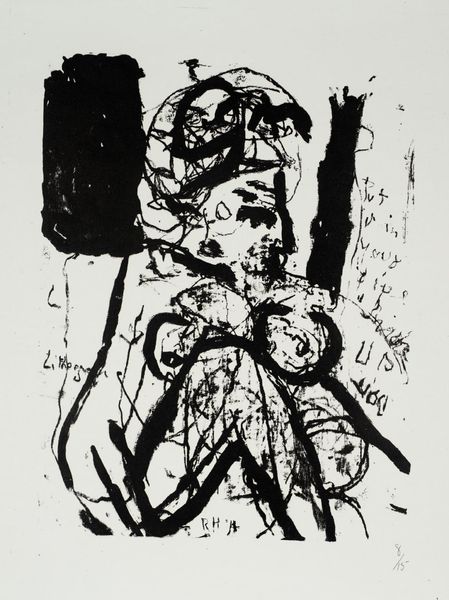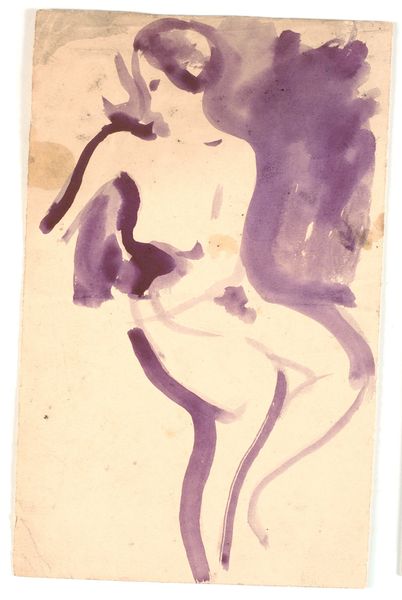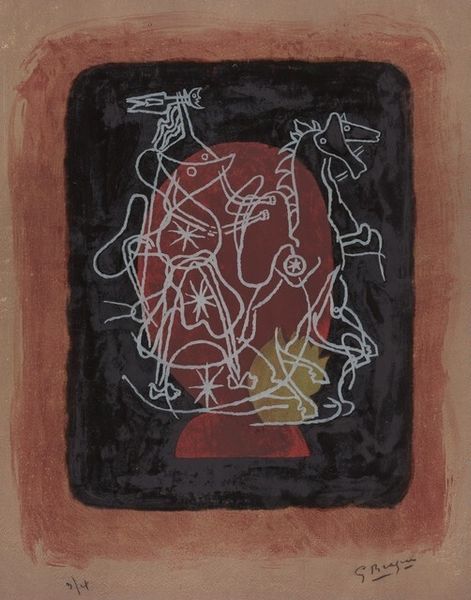
drawing, painting, watercolor
#
portrait
#
drawing
#
painting
#
figuration
#
watercolor
#
erotic-art
Dimensions: overall: 18.9 x 11.6 cm (7 7/16 x 4 9/16 in.)
Copyright: National Gallery of Art: CC0 1.0
Art Historian: Standing before us, we have an intriguing watercolor and paint creation simply called "Untitled," by Mark Rothko. Curator: My initial reaction is… unsettling. The muted colors and almost skeletal figuration give off an aura of fragility and maybe even a touch of decay. Is it just me, or does this feel like a commentary on idealized beauty standards? Art Historian: Perhaps, though Rothko's symbols often run deeper than the immediately visible. Look at the doubled faces, almost like Janus, the Roman god of beginnings and endings, or the somewhat disturbingly portrayed Eros figures with an uncanny arrangement of flowers . Could it represent the duality of human experience – love and loss, beauty and mortality? Curator: That's an interesting read. I still find the piece unsettling because of that very duality. It reflects how oppressive societal standards can be—how the pressure to embody opposing ideals fractures the self, leaving behind only these disfigured semblances. I mean, it's there to depict Erotic figures, but even with roses and a seductive red-painted lip, they are depicted pale and weak in the scene, questioning and shattering our preconceptions. Art Historian: A very pertinent view through the modern, feminist theory lens. Consider, though, that Rothko's journey towards abstraction often involved a stripping away of specific signifiers to reach universal emotions. Maybe these figures aren't about shattering anything specific, but rather about exploring a universal feeling of vulnerability, laying bare the psychic struggles inherent in being, symbolized by this eroticism-juxtaposed representation? Curator: I agree on the vulnerability, absolutely. And I see what you mean by stripping away, though I think stripping away can also be a radical act in itself, particularly for bodies that are already overly scrutinized and politicized. Representing an imperfect and weakened eroticised character opens doors for questioning standards of beauty that usually are inaccessible or based on oppressing ideologies. Art Historian: So we find common ground in vulnerability, presented, ultimately through imagery. Perhaps this reflects art's continuing power to resonate with diverse perspectives over time? Curator: Precisely. Rothko provides the visual framework; we bring our evolving cultural lenses to decode its meaning. It is a constant challenge to past concepts of art through our eyes.
Comments
No comments
Be the first to comment and join the conversation on the ultimate creative platform.

